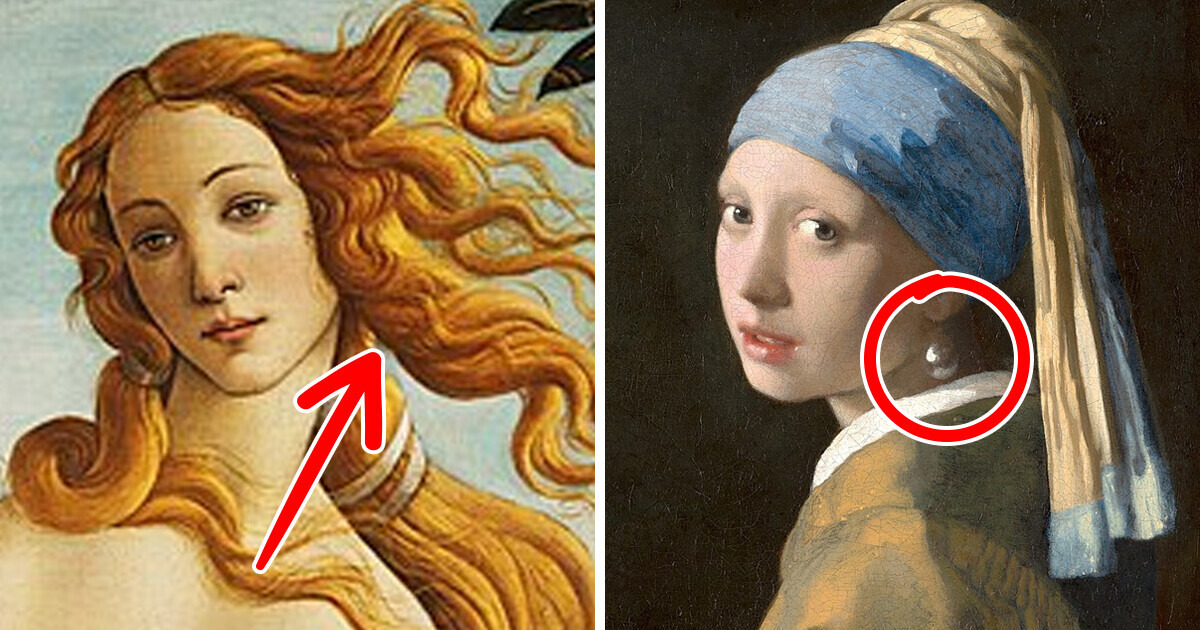12 Chilling Twists That Flip the Story on Its Head


Thanks to modern technology, scientists are uncovering hidden details in classic paintings, from concealed images to forgotten figures. Yet, some mysteries remain unsolved despite advanced tools. We’ve explored what discoveries might change the way we view famous works of art.
In Sandro Botticelli’s The Birth of Venus, a spiral of golden hair rests on Venus’s right shoulder, spinning like a small motor within the painting. This perfect spiral isn’t just a random detail—it gives the painting a sense of movement, drawing the viewer in.
This type of spiral, found in the curves of nautilus shells and the flight of birds, has intrigued people for centuries. In the 17th century, Swiss mathematician Jacob Bernoulli named it the “spira mirabilis” or “marvellous spiral.” In Botticelli’s painting, the spiral seems to be whispering secrets of beauty and truth to Venus.
In Vermeer’s famous painting of the Girl with the Pearl Earring, you might think you see a shiny pearl hanging from her ear. But look closer. The pearl isn’t really there. With just a few clever strokes of white paint, Vermeer has tricked our brains into seeing a pearl where there isn’t one.
If you squint, you’ll notice there’s no actual loop connecting the pearl to her ear. The sphere is an illusion, created by a simple, tiny shape. Vermeer’s pearl is a masterful optical trick that makes us reflect on the way we, too, create illusions about the world around us.
For years, it was believed that the anguished figure in Edvard Munch’s The Scream — an image of raw emotion still powerful over a century later — was inspired by a Peruvian mummy’s shocked expression that Munch saw at the 1889 Universal Exposition in Paris. However, Munch was more concerned with the future than the past, especially the rapid pace of technology.
It’s likely he was even more struck by a massive lightbulb sculpture at the same Exposition, a tribute to Thomas Edison. The sculpture, filled with thousands of smaller bulbs, stood like a glowing symbol of the future. Its shape, with its drooping jaw and rounded top, seems to directly influence the wild, open-mouthed figure in The Scream, reflecting Munch’s fears about the unsettling rise of modern technology.
Love and passion may seem worlds apart from the cold, clinical world of science, but not in Gustav Klimt’s The Kiss. The year he painted it, Vienna was buzzing with scientific progress, particularly around the University of Vienna, where Klimt had previously been commissioned to create paintings based on medical themes.
One key figure was Karl Landsteiner, the immunologist who first identified blood types and was working tirelessly to make blood transfusions a success. If you look closely at the intricate patterns on the woman’s gown in The Kiss, you’ll notice they resemble Petri dishes filled with cells, as if Klimt is offering us a glimpse into her very essence. The Kiss is a glowing, scientific snapshot of eternal love.
Many are familiar with the hidden egg at the heart of Hieronymus Bosch’s chaotic The Garden of Earthly Delights (balanced atop a horseman’s head), but what does this fragile detail truly reveal? If we close the triptych’s side panels, we uncover the painting’s outer shell — a translucent orb floating in the void, symbolizing a delicate world.
Bosch designed his masterpiece as an egg that can be endlessly cracked and re-cracked with each viewing, inviting us to unravel its complexity. With each interaction, we either set the world in motion or rewind time to an innocent, pre-fallen state.
Before you head out, don’t miss our next article, where we reveal 15 confusing photos that will make you question everything— and yes, they’re definitely not photoshopped.











